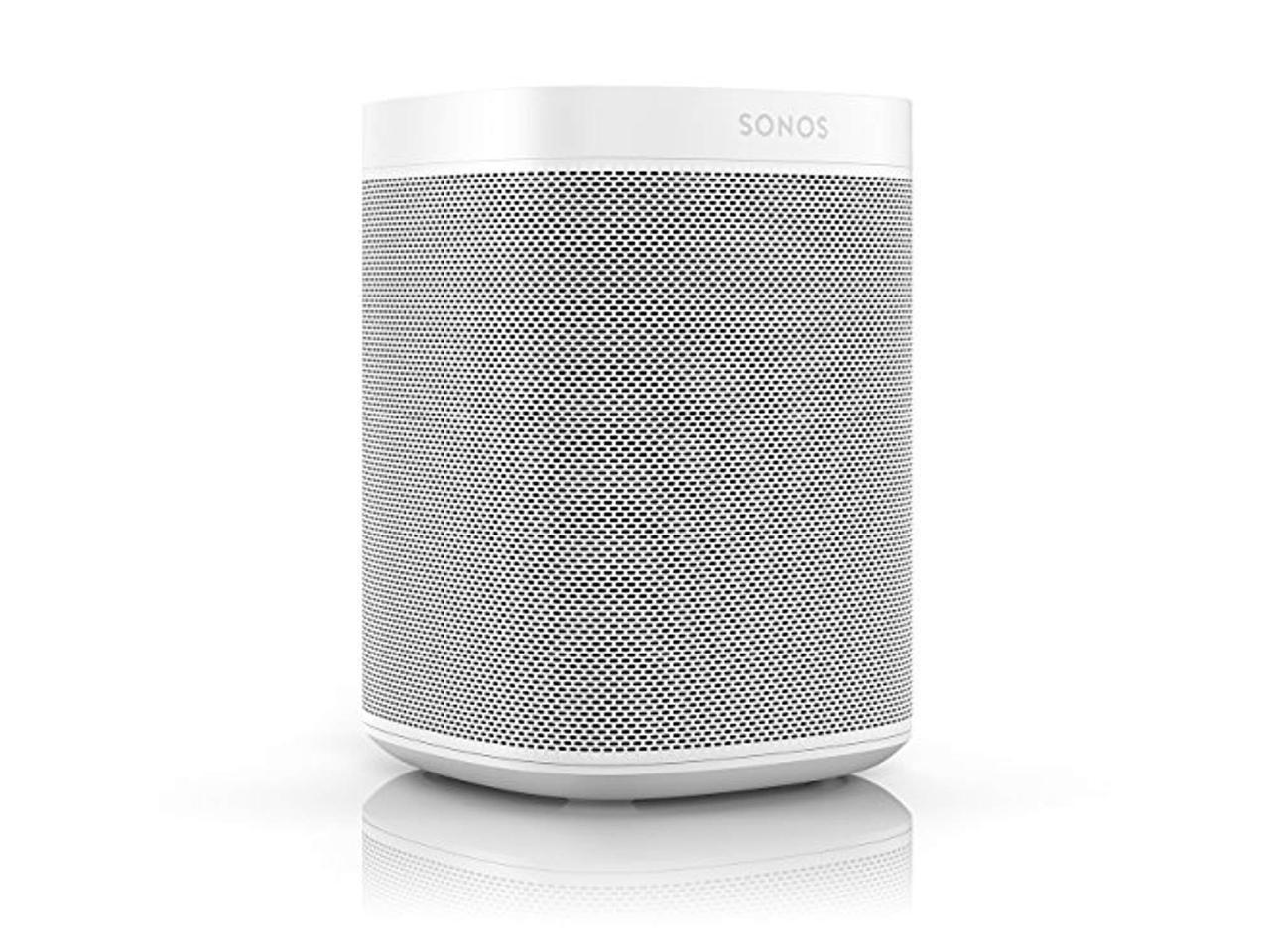
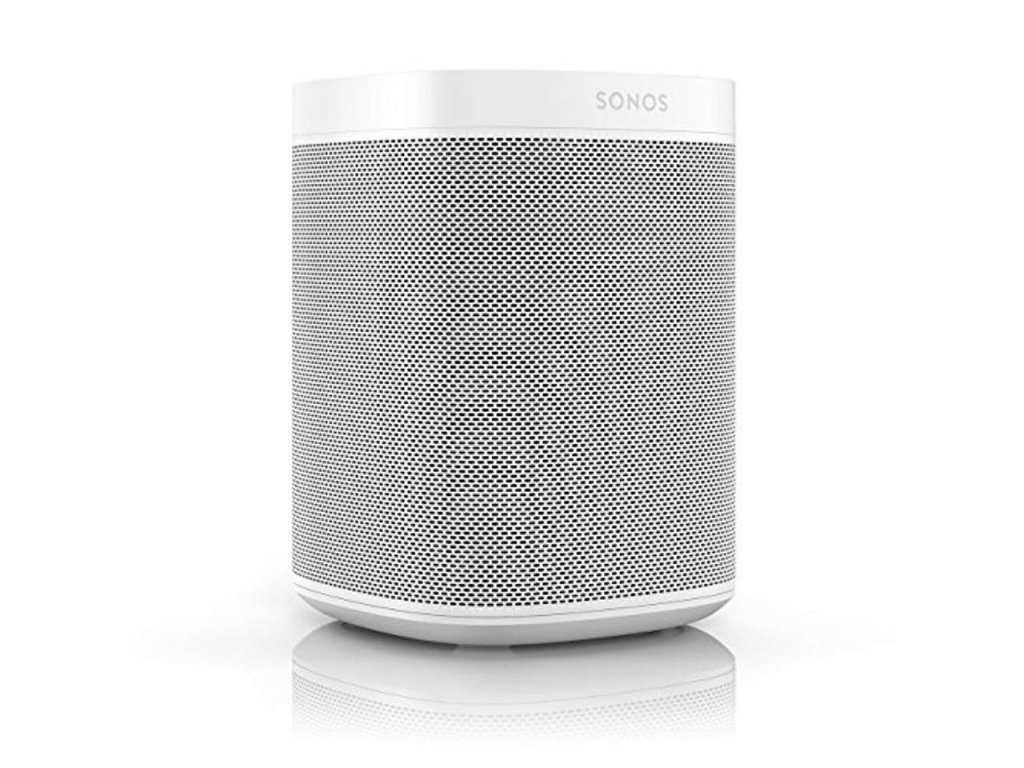 If you demand further proof of audio’s wireless destiny, look no further than the disappearing headphone jack. Whether we like it or not, major electronics manufacturers are removing the decades-old 3.5mm jack from some of the most popular gadgets, from phones to computers. While it’s tough for many of us to part with this beloved piece of Space Age-era tech, the death of the headphone jack isn’t an ominous portent of an audio dark age. While we fretted over the 3.5mm-sized hole in our hearts (and the lack of one in our phones), audio manufacturers innovated on wireless home audio technology, transforming wireless sound from a lossy technology only used for quick convenience into a viable means of “serious listening.” This guide will cover the latest wireless home audio technology (portable speakers are mostly outside the scope of this piece) and some of the best devices and systems for enjoying high-quality wire-free sound anywhere in your house.
If you demand further proof of audio’s wireless destiny, look no further than the disappearing headphone jack. Whether we like it or not, major electronics manufacturers are removing the decades-old 3.5mm jack from some of the most popular gadgets, from phones to computers. While it’s tough for many of us to part with this beloved piece of Space Age-era tech, the death of the headphone jack isn’t an ominous portent of an audio dark age. While we fretted over the 3.5mm-sized hole in our hearts (and the lack of one in our phones), audio manufacturers innovated on wireless home audio technology, transforming wireless sound from a lossy technology only used for quick convenience into a viable means of “serious listening.” This guide will cover the latest wireless home audio technology (portable speakers are mostly outside the scope of this piece) and some of the best devices and systems for enjoying high-quality wire-free sound anywhere in your house.
Wireless Home Audio 101
Wireless audio is by no means a new technology — it dates back to the 19th century if you want to count the invention of the radio — but recent developments in tech have it made more relevant than ever. With modern Wi-Fi technology, you can stream audio wirelessly across speakers in every room of your house, and without losing audio fidelity. Smartphone apps put control of your home’s audio in the palm of your hand, integrating with your preferred music platforms and other audio sources so that whole-home listening is only a tap away. Voice assistants can play your favorite tunes with a simple spoken command and broadcast it across all the compatible wireless speakers throughout your home.
Multi-room audio is handled over Wi-Fi rather than Bluetooth. Wi-Fi presents a number of benefits over Bluetooth: for one, playing the same song across your home and creating groups of linked speakers isn’t possible with current Bluetooth technology. With Wi-Fi, provided you have a robust enough network, you can stream music to virtually every room in your home, or even play different songs in each room. Even better for audiophiles is Wi-Fi’s increased fidelity compared to Bluetooth; even with the latest refinements to Bluetooth connectivity, it still compresses audio files, dealing a heavy blow to your music’s dynamic range, while Wi-Fi is capable of providing comparable fidelity to wired audio.
The focus on multi-room audio has lead to manufacturers placing more consideration into the form factors of their devices, squeezing big sound into small speakers — after all, you probably don’t want giant tower speakers sitting in your kitchen or bathroom. You can find wireless speakers in all shapes and sizes to accommodate any room in your home, from tiny disc-shaped speakers that blend into your decor, to massive floorstanding speakers for your home theater. Best of all, these wireless speakers are all easy to use, usually running through a single app or even through a mobile device OS itself.
Prices and availability of products discussed were accurate at time of publication, but are subject to change.
Wireless Home Audio Technologies
Chromecast Built-in
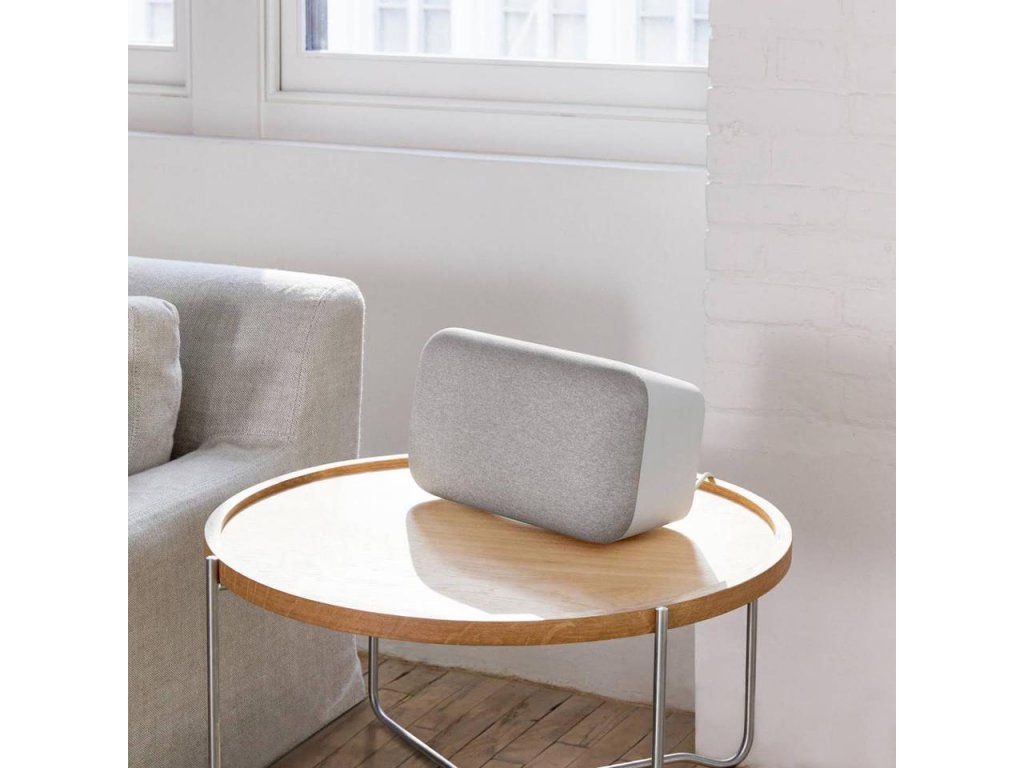
Google may be discontinuing their wonderful Chromecast Audio hardware, but Chromecast has expanded over the past few years to be more than just a device. These days, Chromecast is a technology, formally dubbed “Chromecast built-in,” that lets you stream music over Wi-Fi from mobile devices to compatible speakers. Whenever you want to stream audio to a Chromecast built-in speaker, just press the “Cast” button in supported apps on your computer or mobile device and you’ll be rocking to the music in a matter of seconds. In addition, speakers with Chromecast built-in can be configured for multi-room whole home audio through the Google Home app. Yes, this also means Google Home speakers and many third-party speakers with Google Assistant can be included as part of your multi-room audio groups. Once you’ve linked your Chromecast built-in speakers with the Google Home app, you can use Google Assistant to play music to any linked speakers, either through the app or via voice commands to any Google Assistant speaker on your Wi-Fi network. Unfortunately, stereo pairing is not supported via Chromecast built-in, with the exception of with the Google Home Max speakers (detailed below).
Below are three highlights out of the dozens of speakers with Chromecast built-in:
Google Home Max: Google offers numerous variations of their Google Assistant-powered Google Home smart speakers, but the best bet for anyone craving loud, high-quality audio is the Google Home Max. Backed by a rigid housing, custom tweeters, and dual 4.5” woofers, the Max delivers sound loud and clear. Naturally, it wouldn’t be a Google product if it didn’t integrate in a bit of innovative software smarts, and that’s where the Smart Sound technology comes in. Smart Sound uses machine learning to adjust equalizer settings in the Max on the fly to accommodate the acoustics of your room. The Max also integrates far-field voice control, meaning it can hear your commands even over loud music. Speaking of voice commands, the Google Home Max handles the requisite functions of any good Google Assistant speaker, like smart device controls and music playback (including to specified multi-room audio groups set up in the Google Home app). Add in an auxiliary input for connecting your turntable or stereo, as well as the option to create a stereo pair with two Home Maxs, and you have a voice assistant speaker that’s worthy to be a hi-fi system of its own.
Polk MagniFi Mini: For a soundbar with Chromecast built-in, it’s tough to beat the Polk MagniFi Mini. Don’t let its small size fool you; the MagniFi Mini packs in twice as many drivers as many other mini sound bars, providing room-filling cinematic sound. Better yet, Polk’s Voice Adjust technology dynamically increases vocal clarity and volume, so you won’t miss out on key plot points in your favorite films. Of course, the MagniFi Mini handles music just as well as movies, giving you room-filling sound and powerful bass with the included wireless subwoofer — all compatible with Chromecast built-in technology for integrating into multi-room wireless home audio setups.
JBL Link 20: Even though it’s classified as a portable speaker, the JBL Link 20 is in fact a versatile enough device to make it perfect both on-the-go and as part of a whole home audio setup. Take it out of the house and it’s a highly capable IPX7 waterproof Bluetooth speaker, but take it home and connect it to Wi-Fi, and the Link 20 becomes an amazing lightweight Google Assistant speaker you can carry around the house and integrate into your Chromecast built-in multi-room audio groups. Portability means the Link 20 is powered by a battery, in this case a 6000 mAh Li-ion battery that provides 10 hours of playback (though you can always just keep it plugged into the charger if you don’t plan on moving it).
Apple AirPlay 2
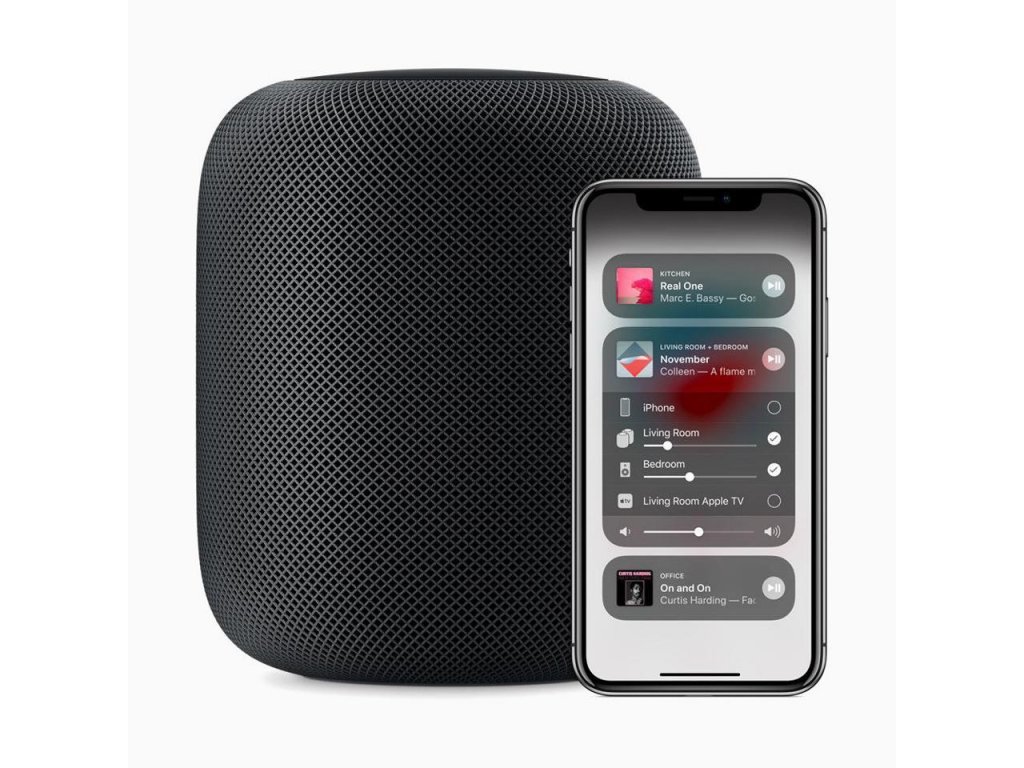 Apple’s wireless audio and video playback system, AirPlay 2-enabled speakers let you take advantage of whole home audio that’s easily controllable through iOS, Mac, and Apple TV devices. If you’re an Apple user — and especially if you’re an Apple Music subscriber — then devices with AirPlay 2 should be a factor in your purchasing decision, as it serves as one of the easiest ways to play music through your home, thanks to easy access controls on all modern Apple iOS and Mac devices. As for Apple Music, the popular streaming service doesn’t enjoy the same widespread integration into wireless home audio systems that, say, Spotify enjoys, making AirPlay 2 the most effective way of bringing it into the fold on many setups. AirPlay 2 is found on scores of speakers, many of them part of larger wireless audio systems, like products from Sonos, Yamaha, and Bose featured later in this guide. Of course, Apple now offers their own wireless speaker that may be the perfect solution for Apple fans…
Apple’s wireless audio and video playback system, AirPlay 2-enabled speakers let you take advantage of whole home audio that’s easily controllable through iOS, Mac, and Apple TV devices. If you’re an Apple user — and especially if you’re an Apple Music subscriber — then devices with AirPlay 2 should be a factor in your purchasing decision, as it serves as one of the easiest ways to play music through your home, thanks to easy access controls on all modern Apple iOS and Mac devices. As for Apple Music, the popular streaming service doesn’t enjoy the same widespread integration into wireless home audio systems that, say, Spotify enjoys, making AirPlay 2 the most effective way of bringing it into the fold on many setups. AirPlay 2 is found on scores of speakers, many of them part of larger wireless audio systems, like products from Sonos, Yamaha, and Bose featured later in this guide. Of course, Apple now offers their own wireless speaker that may be the perfect solution for Apple fans…
Apple HomePod: Although Apple’s Siri is a household name, it’s been all but absent in the burgeoning smart speaker category, ceding ground to Alexa and Google Assistant. Apple’s opening salvo to bring Siri to smart speakers is the Homepod, and though it has a way to go in catching up to its two major competitors, it arguably beats out the competition in one key area: audio quality. The Homepod is powered by an A8 chip, the same 64-bit processor that powered the iPhone 6. By harnessing the power of the A8, the Homepod is able to maximize the bass produced by its upward-facing woofer without introducing distortion, and improve Siri’s ability to hear your commands above loud music. An array of seven tweeters sporting their own amplifiers rounds out this compact package, adding up to a smart speaker that no Apple user should go without.
DTS Play-Fi
While many wireless home audio systems are designed by audio manufacturers to be used within a closed hardware ecosystem, DTS Play-Fi is a wireless system created by the audio gurus at DTS and licensed to numerous manufacturers, including Pioneer, Polk, and Klipsch.
Play-Fi supports whole home audio in addition to 5.1 home theater surround sound. Up to sixteen devices can stream the same song at once. Just like most other whole home audio solutions, Play-Fi lets users designate separate “zones” throughout the home for easy management of audio playback from room to room. Up to four zones can stream audio from separate sources at once.
If you want to control your Play-Fi system with your voice, then you need to take advantage of the system’s Alexa compatibility. By using a Play-Fi speaker with Alexa built-in, like the Pioneer Elite Smart Speaker F4, or by integrating an Amazon Echo device with your system, you get hands-free voice control over your Play-Fi devices. You can ask Alexa to play songs to specific speaker groups or throughout your home, adjust volume, skip tracks, mute, and more.
DTS Play-Fi works on more than just speakers; the wireless audio system extends to headphones too. Rather than requiring proprietary equipment, Play-Fi works with any pair of headphones connected to a phone or tablet through the Play-Fi Headphones smartphone app. The app enables private listening to content playing over any Play-Fi device that supports line-in streaming, like the Polk Omni SB1 Plus sound bar or the aforementioned Pioneer Elite Smart Speaker. You can even connect to multiple headphones and speakers at once.
In addition to the devices mentioned above, here are a couple other Play-Fi devices that will help you get the most out of your wireless home audio system:
Polk Omni S2: If you want a speaker with multiple ways to integrate into a Play-Fi system, then the Polk Omni S2 is one of your best bets. It sports two full-range drivers powered by a 2-channel amplifier and two passive radiators for deep bass. It works well on its own, but it’s even better when you group a pair of them with the previously mentioned Polk Omni SB1 Plus sound bar and create a 5.1 surround sound Play-Fi system.
Klipsch PowerGate Amplifier: If you want to play music from legacy audio devices like turntables, CD players, or MP3 players, then the Klipsch PowerGate Amplifier is the device you need to get your old hardware in on the Play-Fi wireless fun. The PowerGate amplifier has all the inputs you need to play your favorite hits of old, including a phono pre-amp and RCA analog input for your record player, optical audio for Blu-ray and DVD players, and even USB Type B for connecting to a computer and enjoying your high-res audio library the way it was meant to be heard. Oh, and don’t forget the two speaker outputs, which can handle even the most demanding speakers with the PowerGate’s 2×100 watt power.
Wireless Home Audio Systems
Sonos
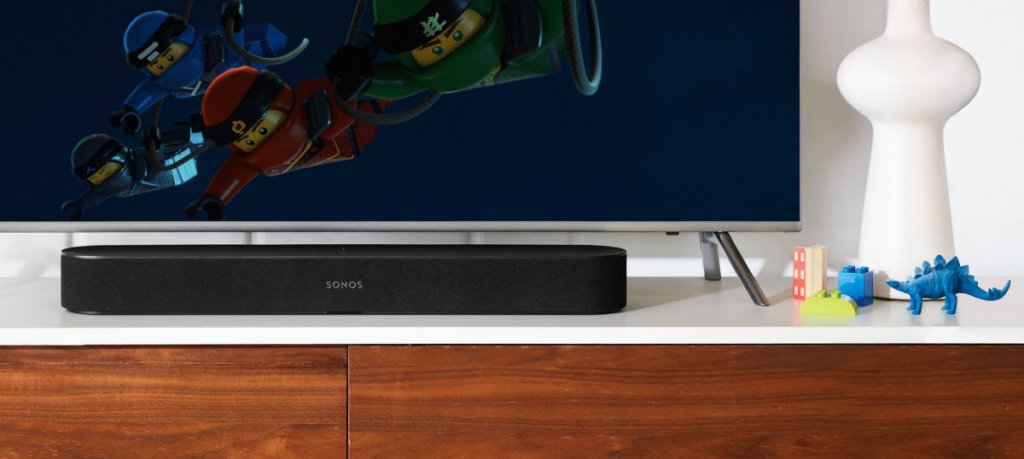
One of the pioneers in multi-room wireless home audio, Sonos offers a wide range of devices along with support for the most popular music services like Spotify, Apple Music, Amazon Music, and YouTube Music. Sonos speakers are lauded for their sound quality, but the audio upstart didn’t get to their dominant position on sound alone; the Sonos app makes everything easy to set up and use, serving as a strong foundation for the manufacturer’s wireless audio experience.
Using the Sonos app, you can set up your Sonos devices with step-by-step instructions, play music from your favorite services, and control your speakers. You can group speakers together into designated rooms and even have multiple rooms play in sync. Sonos speakers can not only play music through your whole home, but can also be configured to play rich stereo sound by pairing two speakers within the same room, or even into a surround sound home theater system with a Sonos sound bar or Sonos amp, a Sonos Sub, and pair of rear surround speakers.
If you’re looking to dip into Sonos, here are a few key devices to get you up and running:
Sonos One: The Sonos One is a wireless smart speaker with Alexa and Google Assistant built-in for controlling your music and smart home devices. It’s compact enough to conveniently place anywhere in your home, and its humidity resistance means you can even put one in your bathroom. Despite its small size, the One produces lush, room-filling sound, whether you’re using it on its own as a source for your favorite music, or as part of a booming home theater surround sound setup. The Sonos One’s fantastic sound quality makes it a solid standalone speaker, but its included voice assistants and its versatility to serve as part of a whole home audio or surround sound system makes it arguably Sonos’ best speaker yet.
Sonos Beam: Sonos is no stranger to sound bars; they already offer two excellent options with the Playbar and Playbase. But for the sake of simplicity, we’re going to focus on their newest sound bar, Sonos Beam. The Beam is different in multiple ways from its predecessors: it’s smaller and more compact, it includes HDMI ARC (the Playbar and Playbase only had optical audio), and sports voice control through built-in Alexa and Google Assistant. By pairing the Beam with a pair of Sonos speakers for rear surround (like two Sonos Ones) and an optional Sonos Sub for powerful bass, you can even create your own 5.1 surround sound system for truly cinematic audio.
Sonos Amp: Connecting devices to the Sonos Amp is the best way to integrate wired speakers and audio sources like stereos and vinyl record turntables into the Sonos ecosystem. Offering 125 watts per channel, the Sonos Amp has the power audio enthusiasts demand for bringing their favorite hi-fi speakers into the world of wireless home audio. Wirelessly adding a pair of Sonos Ones together with your Sonos Amp and connected wired speakers lets you create a surround sound home theater system. You can even run outdoor speakers into the Sonos Amp to bring your multi-room audio system out to your yard.
Amazon Echo and Multi-Room Music

Alexa is perhaps the biggest name in smart home electronics, thanks in no small part to Amazon’s Echo smart speakers; these speakers include a feature called Multi-Room Music, which allows you to play music across all the Echo devices and other supported Alexa speakers on your Wi-Fi network simultaneously. With the Alexa app, you can create Multi-Room Music groups, which can be used to play music on a cluster of speakers when asking Alexa to play your tunes. Echo speakers cannot be configured for surround sound, but you can create stereo pairs with compatible models, like the 2nd generation Echo and 3rd generation Echo Dot.
Echo (2nd Generation): Amazon’s flagship smart speaker and the original Alexa device, the Echo, is still one of the best smart speakers for the price. In addition to its utility as a smart home voice assistant, Amazon’s latest model — the Echo 2nd Generation — works much better as a standalone speaker than the original Echo, thanks to vastly improved sound powered by Dolby 360° audio technology. Asking Alexa to play your music works better too, thanks to the 2nd generation Echo’s seven-microphone array that utilizes improved wake-word performance that helps Alexa hear commands even when you’re loudly kicking out your favorite jams.
Echo Dot (3rd Generation): While the standard Echo may be the original Alexa speaker, the Echo Dot, with its lower price and smaller size, is more popular and arguably more versatile. It’s inexpensive and small enough that you can get as many as you need for you to control your smart home and play music anywhere in your home, while keeping it inconspicuously placed among your home decor. Of course, its diminutive size means it doesn’t produce sound at the same level of volume or quality as the standard Echo. Fortunately, you can connect the Dot to an external speaker using a 3.5mm audio cable, meaning that not only can you essentially make your “dumb” speakers into Alexa devices, but you can also add them into your Multi-Room Music groups.
Harman Kardon Citation
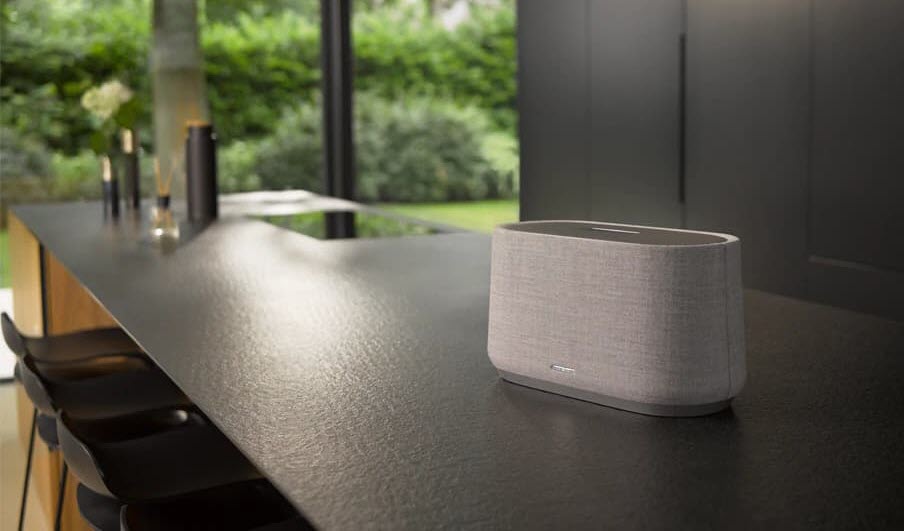
Not one to be outdone by upstarts, long-revered audio electronics manufacturer Harman Kardon offers two wireless home audio solutions: Citation and Omni+. For the sake of brevity we’ll be focusing on Citation since it’s the newer product line and Omni shows signs of being phased out. Harman includes Google Assistant and Chromecast built-in with all of its Citation speakers. That means you’re getting powerful smart speakers that can also connect to a Chromecast built-in multi-room audio system. According to Harman, AirPlay 2 support is coming soon, so you’ll have even more options for streaming music to all corners of your home.
Here are a few highlights of the Citation line, perfect for anyone who wants to incorporate the peerless design and sound of Harman speakers into a wireless home audio system.
Harman Kardon Citation 300: As the mid-tier speaker within the Citation home speaker lineup, the Citation 300 finds itself in a comfortable spot between performance and price. Though it may not aurally stack up to its pricier sibling, the Citation 500, the 300 takes the crown for value among the Citation speakers. With the 300, you’re getting the premium industrial design shared across the entire Citation product line, crafted with a blended wool fabric that is dirt repellant and flame retardant. One of the coolest features of the Citation 300 (and most other Citation speakers for that matter) is its color LCD touchscreen that displays playback controls, the current song playing and its album artwork, along with the settings. As for the sound, the 300 produces rich room-filling audio that leans a little heavy on the bass, making it a great speaker for your next house party.
Harman Kardon Citation Bar: If you want to bring the elegance of the Citation series to your home theater, then you’ll need the Citation Bar. Just like its smaller home speaker ilk, the Bar sports strong blended wool fabric and a color LCD touchscreen. The Citation packs in booming cinematic sound on its own, but it also lets you create a 5.1 surround sound system by adding on the Citation Subwoofer and a pair of Citation Surround satellite speakers, configurable right on the Bar’s touchscreen.
Yamaha MusicCast
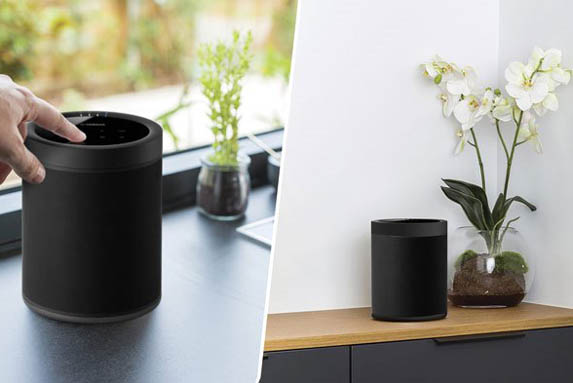
Yamaha has decades of experience of designing exemplary audio products, so it’s only natural that they would make their way to multi-room wireless home audio at some point. The result of their development efforts is MusicCast, their own proprietary system. While on a surface level it looks the same as other multi-room music solutions (control through a single app, support for streaming services like Spotify and Pandora, etc.), it’s the little details that separate Yamaha’s MusicCast from its competitors’ offerings.
For one, Yamaha already produced scores of audio products before pursuing wireless audio in earnest, giving them a bit of a running start when they finally launched MusicCast. Now, almost all of Yamaha’s current receivers sport MusicCast, meaning it’s easy to integrate dozens of devices into a multi-room audio solution with ease. And Yamaha gives you plenty of great-sounding options to stream those sources to, from compact speakers to outstanding sound bars.
Despite being a closed system, MusicCast plays nice with many other technologies. If you want to control your wireless home audio setup with your voice, then MusicCast lets you do it with any of the three major voice assistants (Alexa, Google Assistant, or Siri). All you need to do is link it through each voice service’s app (or an iOS or Mac device in the case of Siri) and you’re off to the races. Better yet, if you’re an Apple fan, Yamaha is in the process of rolling out support for AirPlay 2 to its MusicCast devices, meaning easy streaming from Apple Music and other compatible audio services.
Yamaha RX-V485 Receiver: The Yamaha RX-V485 may be an excellent and affordable 5.1-channel receiver, but its low price tag isn’t all it has going for it. The V485 incorporates MusicCast functionality, meaning you can plug all sorts of audio sources into the receiver and stream them through your home. It also takes advantage of MusicCast Surround technology, so you can connect to a pair of compatible wireless speakers to use in conjunction with the front speakers connected to the V485 for an immersive 5.1 surround sound system.
Yamaha MusicCast 50 Speaker: Speaking of MusicCast surround, the MusicCast 50 speaker is one of the best options for surround speakers in a MusicCast home theater setup. Powerful enough to produce room-filling sound on its own, this 70 watt speaker really sings when you pair it with a second MusicCast 50 for stereo sound, or when you integrate it into your 5.1 surround sound home theater system.
Yamaha MusicCast BAR 400: For a simple entry point into engrossing cinematic sound, consider the MusicCast BAR 400 sound bar. The BAR is powered by DTS Virtual:X 3D surround sound technology, immersing you in the action like never before. The included wireless subwoofer delivers booming bass to rattle the house, dropping you into the action of your favorite movie thrillers. MusicCast integration means you can also stream your favorite music to the BAR, or link it with a pair of MusicCast Surround speakers to plunge you deeper into your favorite films.
Bose
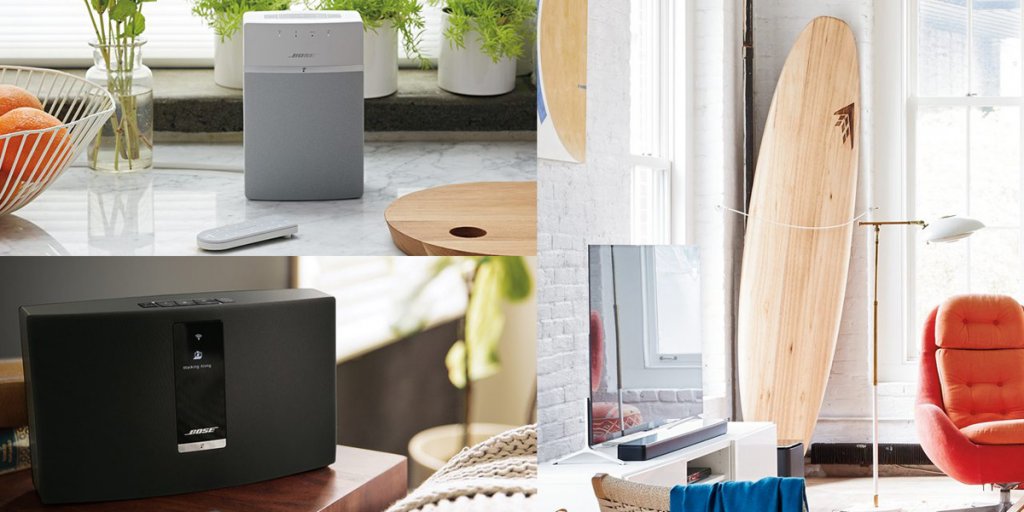
You can’t put together an audio guide and not mention the juggernaut that is Bose. While some audiophiles turn their noses up at Bose’s price-to-performance ratio, it’s tough to argue that they don’t have a finely crafted multi-room audio system. Bose’s SoundTouch system is their own whole home wireless audio solution, and it’s controlled primarily through the SoundTouch smartphone app. SoundTouch supports many music services, like Spotify, Amazon Music, Pandora, Deezer, and SiriusXM. You can also connect your personal music library from a computer or NAS drive.
Although SoundTouch products do not include any type of voice assistant built in, SoundTouch speakers can be paired with any Alexa-enabled device by downloading the “Bose” skill in the Alexa app. Pairing with an Alexa device gives you voice control over all your SoundTouch devices, like asking to play a specific track or playlist, tweaking the volume, or playing music in a specific room.
Bose recently added AirPlay 2 and Google Assistant support to three of its devices: the Bose Home Speaker 500, the Bose Soundbar 500, and the Bose Soundbar 700, with support pending for their SoundTouch speakers. Those three speakers already supported Alexa out of the box, so now Bose owners have multiple voice assistants and music systems to choose from. Keep in mind, though, that those three speakers are not SoundTouch compatible, so your best multi-room option for them is AirPlay integration.
For a taste of some of Bose’s better SoundTouch products, take a look at the following three devices:
Bose SoundTouch 10 Speaker:If you want quick access to your favorite tunes, the SoundTouch 10 sports six preset buttons ready to be programmed with just about anything you can listen to through the SoundTouch app, including albums, artists, playlists, internet radio stations, and even podcasts. And while SoundTouch works best over Wi-Fi, the SoundTouch 10 also includes support for Bluetooth, so you have plenty of connectivity options.
SoundTouch 300 Soundbar: If you want to bring the SoundTouch system to your home theater, then the SoundTouch 300 is the perfect sound bar for the job. Sure, the SoundTouch 300 features the beautiful award-winning design aesthetics Bose is known for, with a glass top and wrap-around metal grille, but it’s the sound that you’re here for. And the 300 doesn’t disappoint, as it is loaded with proprietary technologies to optimize your listening experience. Among these technologies are the PhaseGuide array, which separates audio channels for a wider sound; QuietPort, which keeps the bass from getting distorted, even at high volumes; and ADAPTiQ, a calibration feature that tunes the 300’s sound to your room’s unique acoustics.
Bose Soundtouch SA-5 Amplifier: If you have some passive (non-powered) speakers you want to add to your SoundTouch system, then the SoundTouch SA-5 Amplifier is the piece of gear you’ll need. The SA-5 supports 100W per channel and can run two pairs of speakers in parallel. If you want to add legacy components like a turntable or CD player, the SA-5 has you covered with 2 RCA inputs and a 3.5mm aux input.
Denon HEOS
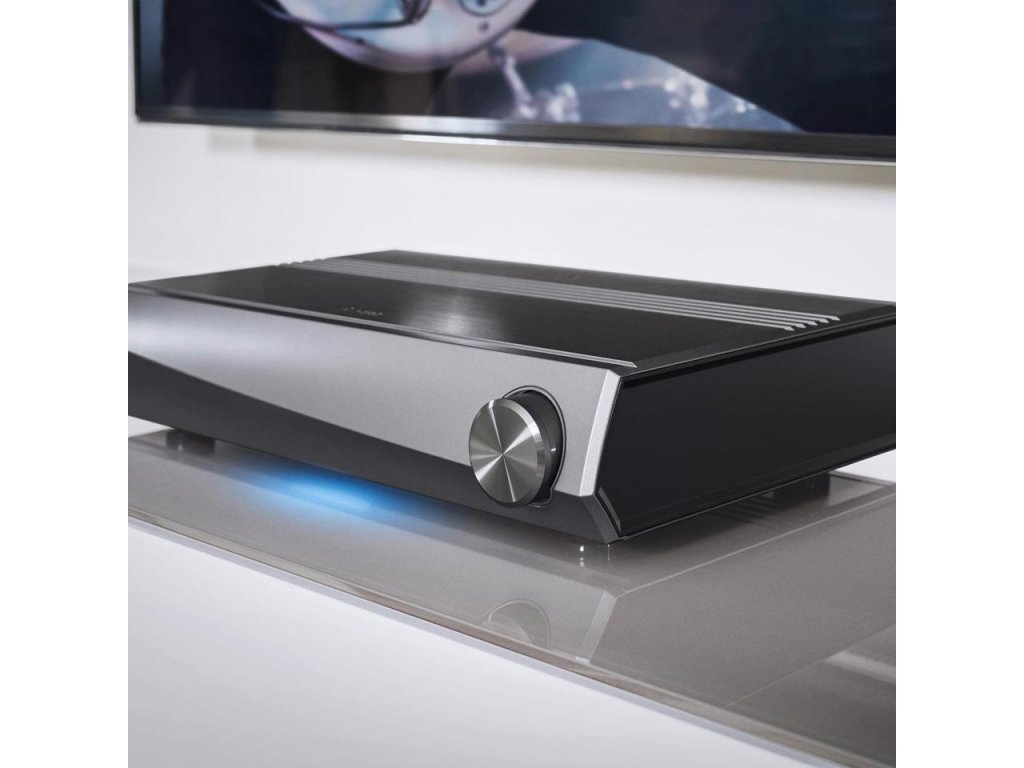
Denon is a brand that holds a lot of cachet with home theater enthusiasts, and with good reason: even though their HEOS system doesn’t make any major overhauls to the wireless home audio formula, the individual components that comprise it are worthy of Denon’s legacy of excellence. WIth the HEOS app, you can configure your compatible devices into groups for multi-room playback, and stream your favorite music services, like Spotify, Amazon Music, and Pandora, to your HEOS system.
As far as support for other technologies goes, HEOS is compatible with Alexa and Google Assistant if you want hands-free control over your whole home music setup. Select HEOS devices also support AirPlay 2 for easy streaming from iOS and Mac devices.
As for the HEOS devices themselves, here are just three of the many sleek and finely crafted pieces of equipment Denon offers for their wireless home audio system:
Denon HEOS AVR: As the centerpiece of a HEOS system, the Denon HEOS AVR looks like a receiver that dropped right out of the future. Its sleek contours and button-free facade suggest a level of simplicity not found on other receivers. While hardcore A/V enthusiasts may balk at its minimalist design and lack of onboard controls, anyone who doesn’t mind managing the bulk of available options through the HEOS app will find a receiver that’s more than capable of bringing your old speakers and devices into your whole home wireless audio system. If you want to create a 5.1 surround system, you can mix your hard-wired front speakers with any two HEOS speakers for rear surround channels, and a HEOS subwoofer for powerful wireless bass.
Denon HEOS 7: If you want the best sound HEOS has to offer, then the HEOS 7 is the speaker for you. Its seven-driver speaker system outputs pristine high-resolution audio that fills rooms and can even play above the din of the wildest parties. Denon packed the HEOS 7 with their best technologies, optimizing sound with their pro-grade acoustical processing algorithms. It even features an auxiliary input for streaming external audio sources out to your other HEOS devices.
Denon HEOS Bar: The HEOS Bar is the gateway for bringing your Denon wireless home audio system to your TV. Underneath its clean exterior, the Bar is powered by 9 high-performance drivers that produce exceptional sound for movies and music. With four 4K-capable HDMI inputs, the Bar is able to connect to multiple home theater setups at once, giving you even more entryways for bringing your wire-bound audio sources into the wireless HEOS system. Pair the bar with a HEOS wireless subwoofer and two other HEOS speakers for full 5.1 surround sound.
Networking for Wireless Home Audio
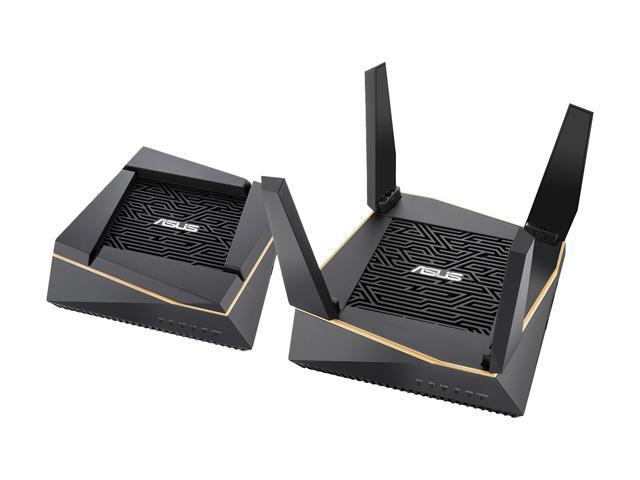 We’re sticking networking in at the end of this guide because while it may not be something you factor in when making an audio purchase, you’re going to need a powerful network to support a multi-room wireless home audio setup. For the best performance, consider a Wi-Fi 6 router like the Netgear Nighthawk AX4 or the ASUS ROG Rapture GT-AX11000. Wi-Fi 6 offers greater performance for networks with many connected devices (e.g. a network filled with wireless speakers and other audio components), so you can keep everything running snappy even with music playing through every room in your home.
We’re sticking networking in at the end of this guide because while it may not be something you factor in when making an audio purchase, you’re going to need a powerful network to support a multi-room wireless home audio setup. For the best performance, consider a Wi-Fi 6 router like the Netgear Nighthawk AX4 or the ASUS ROG Rapture GT-AX11000. Wi-Fi 6 offers greater performance for networks with many connected devices (e.g. a network filled with wireless speakers and other audio components), so you can keep everything running snappy even with music playing through every room in your home.
If you have a larger house, or a home with materials that don’t play nice with wireless signals (like brick), and a single router isn’t giving you the range you need to optimally run all your connected devices and speakers, then mesh Wi-Fi may be the solution you need. Mesh Wi-Fi systems like the Netgear Orbi RBK50 or ASUS AiMesh AX6100 (a Wi-Fi 6 mesh system!) can do wonders at bringing connectivity to all corners of your home. Mesh Wi-Fi, also referred to as whole home Wi-Fi, is a system made of multiple access points, with one router serving as the central connection to the modem, and the other access points rebroadcasting the signal of the router further through a home, eliminating dead spots and providing a stronger signal than what can be found in most range extenders.
The Sound of Music…Anywhere in Your Home
Livening up your home with music in every room is easy with modern wireless technology. And with wireless technology only continuing to improve with Wi-Fi 6 and even 5G, wireless home audio is virtually guaranteed to reach extraordinary new heights. As the top manufacturers release new products and refine technologies, we’ll update this guide to bring your the latest on what you’ll need for the best wireless home audio setup.
